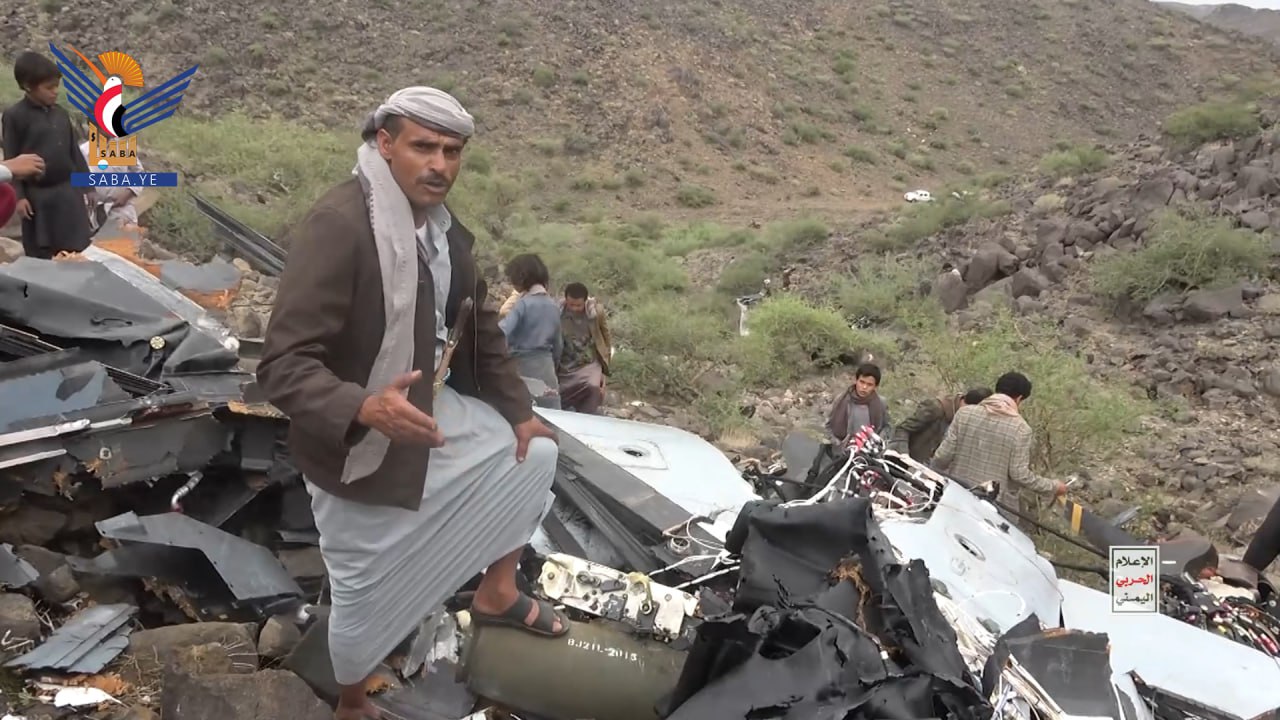Sana'a – SABA: Yahya Jarallah
In a significant and troubling development for the American military, the number of U.S. MQ-9 armed reconnaissance drones shot down by Yemen’s air defenses since the start of the campaign to support Gaza has risen to 22.
The Yemeni Armed Forces announced last Tuesday that their air defenses successfully downed a hostile U.S. MQ-9 drone conducting aggressive missions over the coastal skies of Hajjah Governorate using a locally-made surface-to-air missile. This marked the seventh MQ-9 drone downed in April alone and the 22nd since the launch of the “Promised Conquest and Sacred Jihad” campaign in support of the Palestinian people.
The consistent downing of such a high number of advanced American surveillance drones in a short time reflects the remarkable progress of Yemen’s air defense systems and their growing capability to counter some of the world’s most sophisticated aerial vehicles—tools often deployed for espionage and offensive operations.
Amid intensified American aggression targeting Yemeni civilians and infrastructure, these drones have become prime targets for Yemen’s air defenses. Their downing holds significant military implications and marks a pivotal shift in the course of confrontation.
In a speech last night, Revolution Leader Sayyed Abdul-Malik Badr al-Din al-Houthi highlighted the progress of Yemen’s air defense forces and their growing operational effectiveness, noting their success in downing three MQ-9 drones in just the past week over Sana'a, Al-Hudaydah, and Hajjah. This brings the total number of U.S. drones shot down to 22 since the beginning of Yemen’s support operations for Gaza.
Military experts assert that the ability to shoot down such drones using domestically produced missiles underscores Yemen's rapidly advancing defense capabilities. It also raises serious questions about the continued reliance of the U.S. on these drones and the viability of its ongoing military campaign against Yemen.
The MQ-9 is one of the most advanced American unmanned aerial vehicles (UAVs), featuring sophisticated radar, high-resolution cameras, and sensors. Each unit costs approximately $30 million.
Its missions range from surveillance and reconnaissance to executing precision strikes with guided bombs and missiles. It has a length of 11 meters, wingspan of 20 meters, a flight range of up to 3,000 kilometers, maximum altitude of 45,000 feet, and a top speed of around 300 km/h.
The repeated downing of these drones illustrates a substantial leap in Yemen’s defensive capabilities, sending a clear message to the U.S. that its skies are no longer open playgrounds for these high-tech aircraft, which are integral to its hostile operations in Yemen.
This string of drone losses also poses a major challenge for the U.S., adding to its military embarrassments, already seen with its warships and aircraft carriers that were once symbols of dominance but have since been forced into retreat under pressure from Yemeni forces. This shift is changing how the world perceives American military power.
Adding to this are the financial losses: with each MQ-9 valued at $30 million, the destruction of 22 units means the U.S. has incurred over $660 million in drone losses—on top of other enormous costs from its aggressive operations, depleting missile stockpiles, and expensive air sorties, all of which pose a real threat to America’s economy and defense budget.
Yemen’s air defenses continue to undermine the enemy’s strategy and effectively “mine” the skies against its costly aircraft, which have failed to achieve any military success beyond bombing markets and residential neighborhoods, leaving devastation and civilian casualties in their wake—a testament to the U.S.'s military and strategic failures amid its inability to stop Yemen’s operations against the Zionist entity and its blockade of Israeli and American shipping.
U.S. officials, in statements reported by CNN, acknowledged that Yemen’s success in shooting down American drones, deemed best-suited for the mission, has disrupted their shift to what they called the "second phase" of their military campaign against Yemen.
They also admitted that Sanaa’s forces have become more adept at targeting U.S. drones, and that the continued losses have significantly hampered efforts to destroy Yemen’s military capabilities.
E.M

| more of (Reports) |




